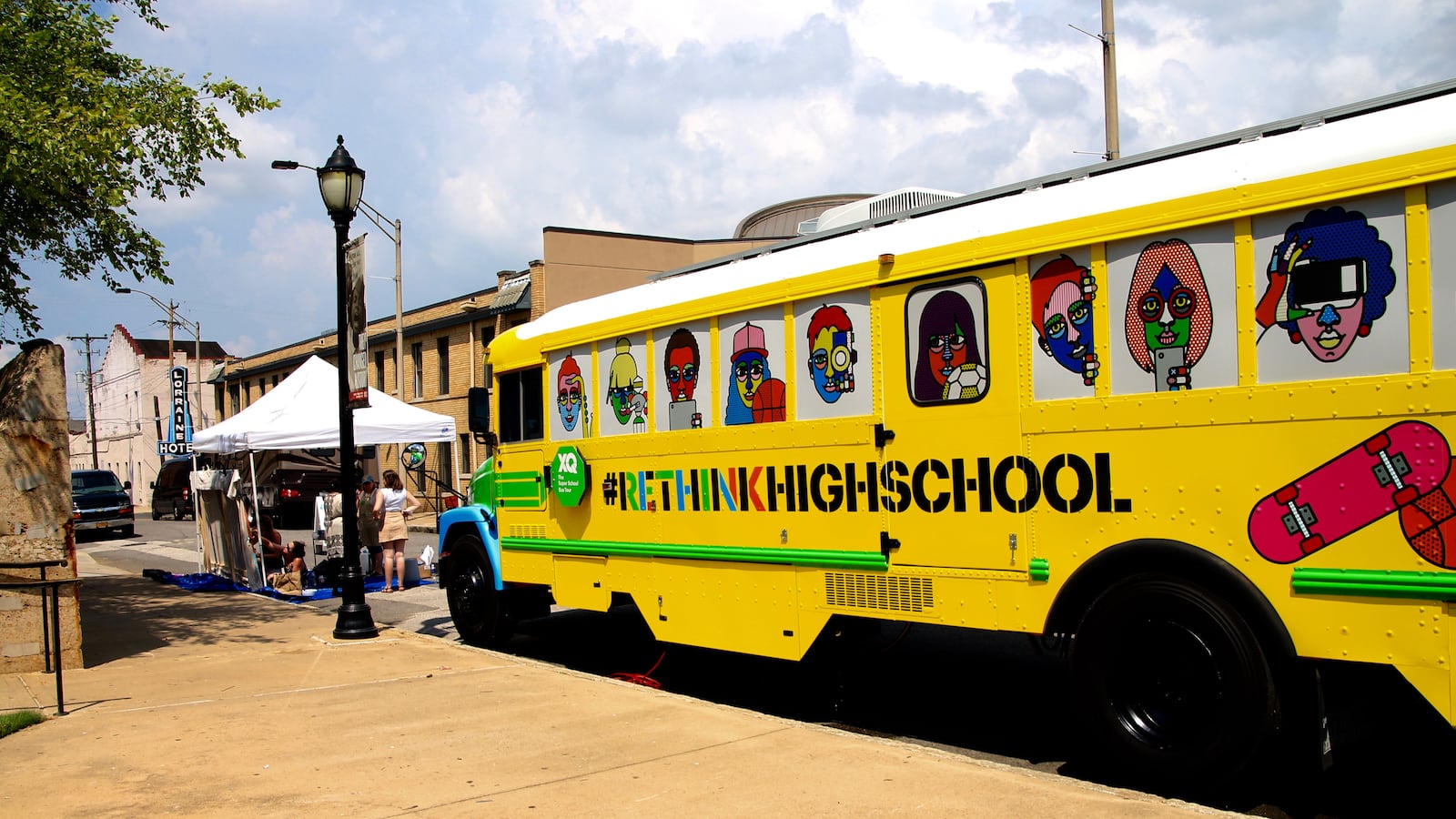Education policy rarely makes national television. But on Friday night, a special focused on redesigning America’s high schools — and featuring Tom Hanks, Jennifer Hudson, and Common — will be taking over the airwaves of ABC, CBS, NBC, and FOX.
The broadcast, “XQ Super School Live,” is an extension of XQ, a project of the Emerson Collective, the organization founded by Laurene Powell Jobs. (The Emerson Collective is a funder of Chalkbeat through the Silicon Valley Community Foundation.) In the last year, XQ has awarded $100 million to innovative schools across the country, including some with a heavy emphasis on technology.
The goal: to call attention to how high school “has remained frozen in time” and to support promising alternatives.
“For the past 100 years America’s high schools have remained virtually unchanged, yet the world around us has transformed dramatically,” intones the familiar voice of Samuel L. Jackson in a video promoting the TV event.
It’s a view U.S. Secretary of Education Betsy DeVos shares. “Far too many schools have been stuck in a mode that is basically approaching things that have been done very similarly to 100 years ago, and the world today is much different,” DeVos recently said while visiting a Florida charter school.
But is it true? Is it really the case that high schools haven’t seen major change over the last century?
Chalkbeat asked several education historians for their take. They said no, schools have changed — in some respects significantly — over the last several decades.
However, XQ has a point in saying that the basic setup of schooling has remained largely intact, they said.
“The ‘grammar’ of high schooling has stayed fairly static,” said Jonathan Zimmerman, a historian at the University of Pennsylvania. “Kids take seven or eight subjects, the major subjects have stayed fairly static, [students] move from room to room, school begins around 7 or 8 and ends around 3.”
“I can understand why in a lot of ways, in terms of structure, it feels like high schools haven’t changed,” said Ansley Erickson, an assistant professor of history and education at Columbia University Teachers College. But, she said, there has been a massive transformation of high school from an institution for a chosen few into a mass institution for virtually all teenagers in the country.
“To say that high school hasn’t changed might potentially miss that major transformation,” Erickson said.
Zimmerman largely agreed.
“If by this claim [XQ] is asserting that high schools today share some fundamental elements with high schools 100 years ago, I’m with them,” he said. “But that’s very different from saying nothing has changed.”
Like Erickson, he pointed to the “birth of mass high school” as a major change. “It’s not until the 1930 that the majority of adolescents attended high schools, and it’s not until the 1950s that the majority graduate from one,” Zimmerman said.
He also pointed to several ways the content and structure of American high school has changed, and sometimes changed back: the development and decline of vocational tracks; an increased emphasis on “life skills” followed by a greater focus on academics post-Sputnik; the diversification of high school offerings (into what some have called the ”shopping mall” high school) followed by the rise of small high schools.
Jack Schneider, a professor at the College of the Holy Cross, was more scathing in his assessment of XQ’s assertion.
“Ahistorical claims about outmoded schools are designed to persuade us that public education is run by incompetents,” he told Chalkbeat in an email. “If that’s the case, maybe disruption is the cost we need to bear in pursuit of progress. But the truth is that the schools have been constantly evolving over time, in ways large and small.”
In an op-ed for the Boston Globe, Schneider elaborated on what has changed:
“A century ago, teachers were largely untrained and oversaw very large classes in which rote memorization was the rule. Students brought their own books from home and the curriculum varied from school to school. Courses like zoology and technical drawing were common and classical languages still maintained a strong foothold. Students of color, when educated, were largely denied equal access, and special education did not exist. It was a different world.”
In recent years, America’s graduation rates have been rising and dropout rates have been falling. National test scores have generally been flat, overall, for high schoolers. (There remains significant debate about the causes of those trends, including the impact of changing student demographics and graduation standards.)
History aside, the key policy question today is whether high schools would benefit from the kind of dramatic rethinking XQ is encouraging.
The underlying assumption of XQ is that the relatively static nature of some aspects of high school suggests the answer is yes. But the fact that these methods have been persistent could also mean just the opposite.
“There are other moments when people have said we need to reconceptualize high school,” said Erickson. “This is not the first one of these.”
This story has been updated to clarify the name of the College of the Holy Cross.


